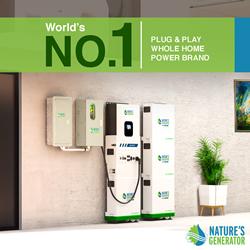Siemens presents cost out strategy for offshore wind by 2025
• LCoE for offshore wind power below eight euro cents per kWh by 2025 • Levers include digitalization and innovative foundations • Competitive energy supply and climate protection
Global Offshore Wind 2016 in Manchester, June 21-22: Siemens at stand 140
• LCoE for offshore wind power below eight euro cents per kWh by 2025
• Levers include digitalization and innovative foundations
• Competitive energy supply and climate protection
In early June, 2016, eleven members of the wind industry association Wind Europe issued a joined declaration containing the target of making offshore wind energy more cost competitive with conventional power generation within the coming years. At the Global Offshore Wind 2016 conference and exhibition in Manchester, England, Siemens as one of the first companies in the business is showcasing its commitment to lower the Levelized Cost of Energy (LCoE) for offshore wind power. Siemens offshore wind projects from 2025 onward will be capable of generating electricity at an LCoE level below eight euro cents per kilowatt hour (kWh). This price will also include the costs for grid access to shore.
Siemens is confident that they will reach their current goal of generating offshore wind power below ten euro cents per kWh by 2020. Today, 72% of this targeted cost reduction has already been reached. Almost half of that achievement can be attributed to technical improvements within wind turbines, installation processes, new grid connection technologies, maintenance strategies, and logistics.
"The offshore cost-out target for 2025 is an important milestone for us and the industry to enable offshore wind grid parity. At the same time, it combines climate protection and cost efficiency," said Michael Hannibal CEO of Siemens Wind Power and Renewables Division. "We are confident that we will lower the LCoE to below eight euro cents per kWh by 2025."
The reduction of costs by two euro cents over the following five years will be mainly based on the next generation of offshore wind turbines and cutting-edge, mass-produced offshore foundations. The annual energy output can grow by 10% under average offshore wind conditions if rotor diameters and generator output also increase by 10%.
With the blade manufacturing and wind turbine assembly in Hull, England, and the nacelle manufacturing plant in Cuxhaven, Germany, Siemens expects a boost from the highly industrialized manufacturing processes by mid-2017. Digitalization processes furthermore contain additional potential to increase efficiency within the plants, making technology even more economical.
Within foundations, Siemens is currently developing an innovative solution to be tested at a Danish offshore project in 2017. It will use gravity jacket foundations including a new transition piece made out of concrete. The grid structure will be assembled using prefabricated nodes and standard steel pipes. Siemens is currently testing the static strength and corrosion resistance of the nodes, produced in bulk by welding robots. Further leverage of cost reductions arise from improvements in offshore service concepts and progress in grid access technologies. The 588-megawatt (MW) Beatrice project in Scottish waters will utilize compact Siemens Offshore Transformer Modules (OTM), cutting costs of AC-grid connections by approximately 40%.
This press release is available at:
www.siemens.com/press/PR2016060313WPEN
For further information on Division Wind Power and Renewables, please see:
www.siemens.com/wind
Siemens AG (Berlin and Munich) is a global technology powerhouse that has stood for engineering excellence, innovation, quality, reliability and internationality for more than 165 years. The company is active in more than 200 countries, focusing on the areas of electrification, automation and digitalization. One of the worlds largest producers of energy-efficient, resource-saving technologies, Siemens is No. 1 in offshore wind turbine construction, a leading supplier of gas and steam turbines for power generation, a major provider of power transmission solutions and a pioneer in infrastructure solutions as well as automation, drive and software solutions for industry. The company is also a leading provider of medical imaging equipment - such as computed tomography and magnetic resonance imaging systems - and a leader in laboratory diagnostics as well as clinical IT. In fiscal 2015, which ended on September 30, 2015, Siemens generated revenue of €75.6 billion and net income of €7.4 billion. At the end of September 2015, the company had around 348,000 employees worldwide. Further information is available on the Internet at www.siemens.com.
Featured Product

Nature's Generator MyGrid 10K
A 10,000W plug & play whole-home generator with a 10kWh LiFePO4 battery for reliable backup power. Features easy setup, flexible 120V/208-240V input, and solar/wind charging. Expandable with extra batteries or solar panels, and can pair two units for 20,000W for even larger energy needs. Powers your home during power outages, reduces electricity costs, and supports sustainable energy.
